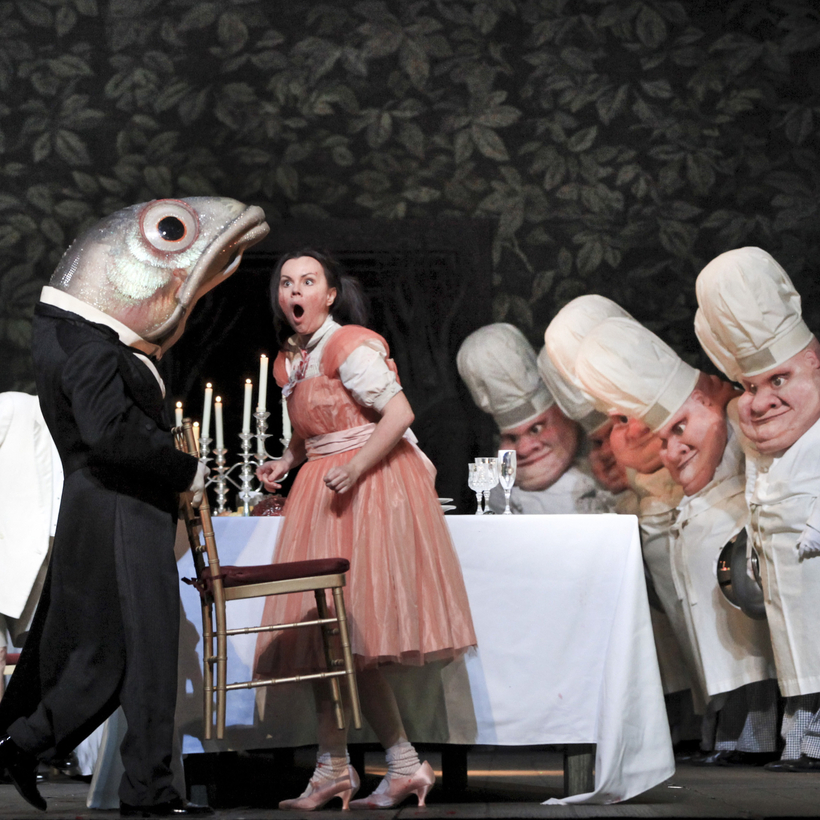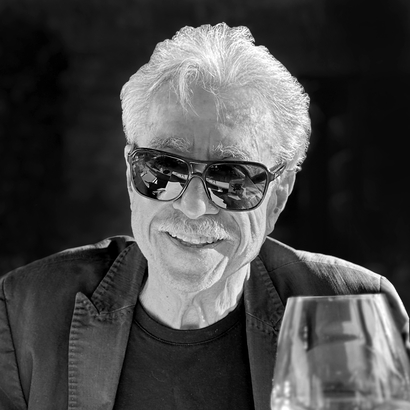I’ve dined out for decades and have been to almost every restaurant I longed to try, thanks to my perseverance and an irrepressible appetite. Yet, one place has endlessly intrigued and eluded me: the cafeteria of New York’s Metropolitan Opera House.
Patrons range from stagehands to stars. Sadly, I am neither. And because tables are reserved only for employees of the opera house, and, occasionally, for dancers from American Ballet Theatre, I’ve never been able to get in. Just to be clear, I harbor no desire to meet a sylph-like ballerina or even a robust soprano. I simply wish to learn if the cafeteria is as romantic as I have imagined. And like every New Yorker, I want access to what I have been denied.
My wish to dine at the cafeteria—still referred to as a “coffee shop” by those of a certain generation—began years ago, after I read Dancing on My Grave, the 1986 autobiography of Gelsey Kirkland, the radiant and troubled ballet star. She wrote, “On May 7, 1983, I had another brain seizure, in the cafeteria at the Met. I had been awake for days and ran out of Valium. I was scheduled for a rehearsal. At a cashier’s counter, I shrieked and flipped backward into the air, crashing to the floor and splitting open my scalp.” Not exactly an irresistible restaurant recommendation, I know, but I was captivated. After all, isn’t tragedy the essence of practically every opera?
Like every New Yorker, I want access to what I have been denied.
I first attempted to obtain access by e-mailing a Met executive. I even included my artistic credentials—I once interviewed Vladimir Horowitz, thank you very much. I was met with silence. A thoughtful reply denying my request might have dissuaded me, but again, like most New Yorkers, being ignored only makes me more determined. So I decided to sneak in. After all, what’s a uniformed guard compared with a tuxedoed maître d’?
The cafeteria should not be confused with the Metropolitan Opera’s primary dining venue, which is lavish, open to the public, and called the Grand Tier. The cafeteria is not on a grand tier. It is found on a subterranean tier, in the catacombs of the building. And to gain access, I went through the stage door, which is located in a long tunnel near Amsterdam Avenue. The guard, who carried a holstered walkie-talkie, was friendly rather than fearsome. (I doubt the Met security forces are on the lookout for guys trying to get their hands on a $5.45 B.L.T., even if that’s about half the price that most Manhattan sandwich shops charge.)
I was met by a veteran of the Met’s in-house underground system, who was kind enough to escort me to my unauthorized destination. I stayed close behind, recalling those movies I saw as a kid where the wily jungle guide leads greenhorns into the depths, warning them that if they fall behind they’ll never be seen again.
I doubt the Met security forces are on the lookout for guys trying to get their hands on a $5.45 B.L.T.
We came to an elevator. My guide said it was so slow we wouldn’t be using it. I didn’t care. Behind us was the opera stage, which thrilled me beyond reason, even though I could make out only a fraction of it and absolutely nothing of interest was taking place.
In all, our journey required 12 changes of direction as we twisted our way through basement corridors. We passed several signs with arrows pointing in the direction of the “coffee shop,” although I do not believe I could have found my way using only those signs. We passed rows of oversize instruments—upright basses, I believe, most in battered cases, apparently too unwieldy to carry home after performances.
Should you replicate my adventure, you will know you’ve arrived at the cafeteria when you come upon a lineup of vending machines, including one that holds a vast array of ice-cream novelties. It was as wonderful as a Good Humor truck.
At last I entered the cafeteria, the very place where Kirkland’s meal was catastrophically interrupted. Now, I have eaten in every one of the fabled canteens of the Hollywood studios, the places where the Marilyns and the Clarks posed over lavish lunches, smiling deliciously for publicity photos, and I can now report that the Met cafeteria bears absolutely no resemblance. It is likely that the only stars you’ll see here are on the posters that line the walls: the Swedish baritone Peter Mattei as Mozart’s Don Giovanni, looking down at a corpse, which might disturb some appetites, but not those of opera devotees; a very dramatic Finnish soprano Karita Mattila as Puccini’s Floria Tosca; Russian coloratura soprano Albina Shagimuratova in Lucia di Lammermoor, touted correctly as a “new opera sensation”; and the beloved Franco Zeffirelli production of La Bohème. As to the dining area itself, let’s just say that its charms are prehistoric. The trays are so tiny it’s difficult to fit a substantial amount of food on one of them. The utensils are plastic.
As to the dining area, let’s just say its charms are prehistoric.
And then there is the cuisine. The selections are … unexceptional. Chicken fingers? They got them. If you like yogurt, the cafeteria might thrill you because the selections are vast. It seems that yogurt is favored by ballerinas and ballerinos, the latter being the term for male ballet dancers, although I’ve never heard it used. The B.L.T., overloaded with crisp bacon, was the star of my lunch, though the tomato was disappointing, considering this was tomato season, but acceptable, considering the price. Sweet-and-sour chicken, the hot special of the day, was steam-table cuisine. The grilled cheese was rather good, buttery and cheesy.
Still, prices are so low it’s hard to complain. As my companion explained to me, the cafeteria is more about convenience than cuisine, its mission to provide fuel for people who work in an industry where hours are extensive, often extreme.
Toward the end of my meal, I bought a very good ice coffee—a mere 90 cents—and took it all in. A number of the vinyl seat cushions were torn, but otherwise the room was well maintained. The wooden slat-back chairs would be snatched up at a yard sale. The flowers—red geraniums, I believe—were fake, but good fakes. And then, at a table adjoining mine, I noticed a young man reciting lines from Macbeth, which famously opened without Plácido Domingo this past September. He was in the production and explaining the creative process to his companions, in particular the importance of tonality. To demonstrate his point, he began to sing. It was magical. I listened, transfixed and overjoyed. Few operas, I realized, end as happily as my meal.
Alan Richman is a food-and-wine writer


